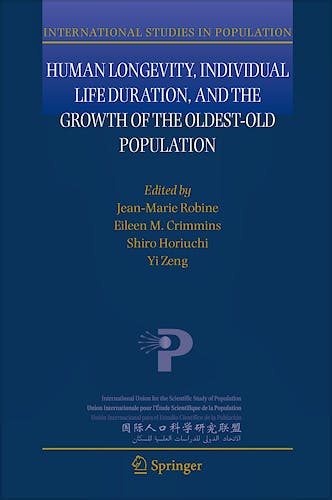

No hay productos en el carrito



Human Longevity, Individual Life Duration & the Growth of the Oldest-
Robine, J.-M
1ª Edición Enero 2007
Inglés
Tapa blanda
444 pags
2200 gr
null x null x null cm
ISBN 9781402048470
Editorial SPRINGER
Old-age survival has considerably improved in the second half of the twentieth century. Life expectancy in wealthy countries has increased, on average, from 65 years in 1950 to 76 years in 2005. The rise was more spectacular in some countries: the life expectancy for Japanese women rose from 62 years to 86 years during the same period. Driven by this longevity extension, the population aged 80 and over in those countries has grown fivefold from 8.5 million in 1950 to 44.5 million in 2005. Why has such a substantial extension of human lifespan occurred? How long can we live?
In this book, these fundamental questions are explored by experts from such diverse fields as biology, medicine, epidemiology, demography, sociology, and mathematics. They report on recent cutting-edge studies about essential issues of human longevity such as evolution of lifespan of species, genetics of human longevity, reasons for the recent improvement in survival of the elderly, medical and behavioral causes of deaths among very old people, and social factors of long survival in old age
Written for:
Demographers, biologists, gerontologists, sociologists, public health researchers and policy makers
Keywords:
- Biology of longevity
- Causes of death
- Demography
- Indicators
- Oldest old (centenarians)
- Social Factors
Table of contents
In Memoriam Vaïnö Kannisto, Jean-Marie Robine. Preface. Acknowledgements.
Introduction by the editors.-
Section 1: Theoretical and Comparative Biological Concepts.
1: Research Issues on Human Longevity, Jean-Marie Robine. 2: Patterns in Mammalian
Aging: Demography and Evolution, Steven N. Austad. 3: Life Span Extension in
Humans is Self-Reinforcing: a General Theory of Longevity, James R. Carey, Debra
S. Judge.-
Section 2: Empirical and Analytical Studies of Ageing and Oldest-Old Populations.
4: Oldest-Old Mortality in China, Zeng Yi, James W. Vaupel. 5: Central and Dispersion
Indicators of Individual Life Duration: New methods, Väinö Kannisto.
6: Recent Trends in Life Expectancy and Rectangularisation of the Survival Curve
at Advanced Ages in the Netherlands, Wilma J. Nusselder. 7: The Validation of
Exceptional Male Longevity in Sardinia, Michel Poulain, Giovanni M. Pes, Ciriaco
Carru, Luiggi Ferrucci, Giovanella Baggio, Claudio Franceschi, Luca Deiana.
8: Mortality at Extreme Ages and Data Quality: the Canadian Experience, Robert
Bourbeau, Bertrand Desjardins.-
Section 3: Causes of Death and Biological Frailty.
9: Causes of Death among the Oldest-Old: Validity and Comparability, France
Meslé. 10: Causes of Death among the Oldest-Old: Age-Related Changes
in the Causes-of-Death Distribution, Shiro Horiuchi. 11: Genetic Factors Associated
with Individual Life Duration: Heritability, Kaare Christensen, Anne Maria Herskind.
12: Mortality among the Least Frail: Lessons from Research on the APOE Gene,
Douglas C. Ewbank.-
Section 4: Sex, Gender and Social Determinants and Consequences of Mortality.
13: Social Determinants of Mortality in the Oldest-Old: Social Class and the
Individual Way of Life, Marja Jylhä, Tiina Luukkaala. 14: Social Differences
in Older Adult Mortality in the United States: Questions, Data, Methods, and
Results, John R. Wilmoth, Mike Dennis. 15: Mortality Differences by Sex among
the Oldest-Old, Jacques Vallin.-
Section 5: Causes of the Trend in Mortality and Morbidity.
16: Explanation of the Decline in mortality Among the Oldest-0ld: the Impact
of Circulatory Diseases, Bernard Jeune. 17: Explanation of the Decline in Mortality
among the Oldest-Old: A Demographic Point of View, Graziella Caselli, James
W. Vaupel, Anatoli I. Yashin. 18: Marital Status and Family Support for the
Oldest-Old in Great Britain, Emily Grundy, Michael Murphy.-
Index
© 2025 Axón Librería S.L.
2.149.0